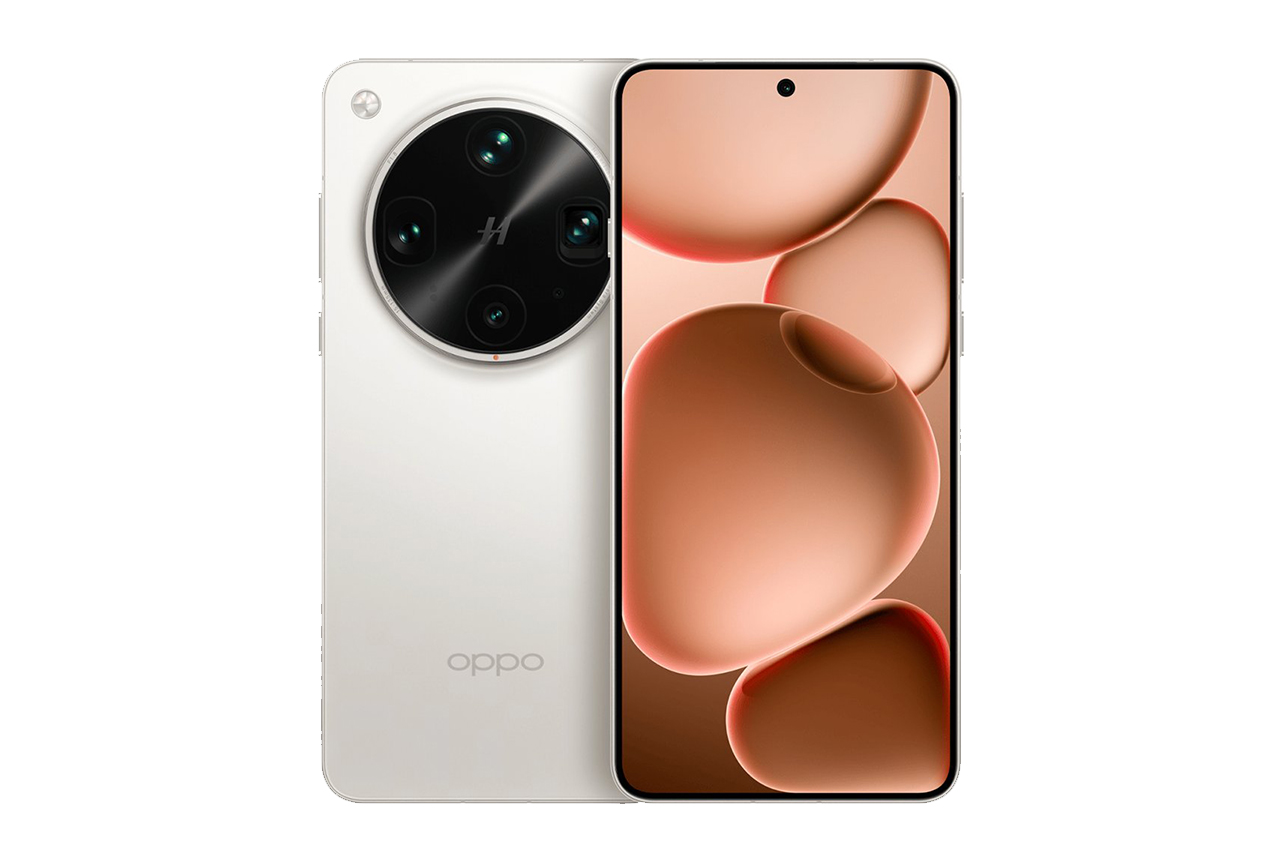We put the OPPO Find X8 Ultra through our rigorous DXOMARK and Camera test suite to measure its performance in photo, video, and zoom quality from an end-user perspective, with our just released updated test protocol. This article breaks down how the device fared in a variety of tests and several common use cases and is intended to highlight the most important results of our testing with an extract of the captured data.
Overview
Key camera specifications:
- Primary: 50 MP, f/1.8, 23mm (wide), PDAF, Ball-Type OIS
- Ultra-wide: 50 MP, f/2, 15mm (ultrawide), PDAF.
- Short Tele: 50 MP, f/2.1, 70mm (telephoto), PDAF, Ball-Type OIS
- Long Tele: 50 MP, f/3.1, 135mm (telephoto), PDAF, Ball-Type OIS
Scoring
Sub-scores and attributes included in the calculations of the global score.

Oppo Find X8 Ultra


Use cases & Conditions
Use case scores indicate the product performance in specific situations. They are not included in the overall score calculations.
Portrait
Portrait photos of either one person or a group of people
Outdoor
Photos & videos shot in bright light conditions (≥1000 lux)
Indoor
Photos & videos shot in good lighting conditions (≥100lux)
Lowlight
Photos & videos shot in low lighting conditions (<100 lux)
Zoom
Photos and videos captured using zoom (more than 1x)
Pros
- Outstanding Photo Portrait mode performance, delivering a precise subject separation and a realistic Bokeh effect
- Accurate exposure and effective HDR implementation in both photo and video, enhancing contrast accross diverse lighting conditions
- Consistently natural and vibrant color rendering in both landscape and portrait scenarios, even under challenging conditions
- High level of detail retention in both photo and video, with effective noise reduction, including in low-light or complex scenes
- Reliable and precise autofocus performance, with strong motion-freezing capabilities for capturing decisive moments
- Outstanding Zoom performance in both Photo and Video, maintaining high detail fidelity at medium and long-range
Cons
- Occasional color instabilities may be observed in both photo and video
- Image artifacts, such as ghosting and fusion inconsistencies can appear in highly challenging scenarios, particularly involving motion
Please note that all image quality evaluations in this test, for photos and videos, were conducted using the HDR format. To accurately view HDR content, an HDR-capable display and compatible software are required if not viewed directly on the tested smartphone. Since the rendering can differ significantly between HDR and SDR formats, particularly in terms of color reproduction, the images presented in this article may not fully reflect the actual image quality achieved in HDR when viewed on non-HDR displays.
The OPPO Find X8 Ultra positions itself as a very compelling choice for photography enthusiasts and mobile videographers, establishing a new benchmark in several critical areas of mobile imaging performance. Building on the already strong foundation of the OPPO Find X8 Pro, the Find X8 Ultra introduces upgraded sensors, improved optics and is powered by the latest Qualcomm Snapdragon 8 Elite chipset, delivering enhanced computational photography and overall imaging capabilities.
A standout feature of the OPPO Find X8 Ultra is the exceptional performance of its Photo Portrait mode. The Bokeh rendering is both highly accurate and natural, delivering a refined subject-background separation that avoids artificial overprocessing. Whether capturing spontaneous moments or carefully composed portraits, the OPPO Find X8 Ultra consistently produces results with precision, depth, and visual sophistication.
One of the OPPO Find X8 Ultra’s key strengths is its robust exposure control and dynamic range management. Leveraging a well-optimized HDR implementation, the device delivers consistently excellent results in both photo and video capture across a wide range of lighting conditions. High-contrast scenarios, such as backlit portraits, high-dynamic-range landscapes, or low-light night scenes are rendered with precision, preserving highlight and shadow detail while maintaining vivid, natural-looking colors. This ensures a reliable performance in any lighting environment.
The Find X8 Ultra also stands out for its consistent sharpness and fine detail retention. Even in low-light or high dynamic range scenes, the camera effectively mitigates noise without sacrificing image quality. This is particularly evident in portrait photography, where the device delivers detailed, naturally rendered results, avoiding the over-processed or unnatural textures sometimes seen in competing devices.
The autofocus system is both fast and accurate, enabling users to reliably capture important moments. Motion is effectively frozen in-frame, making the device well-suited for action-oriented scenarios such as sports, wildlife, or street photography. However, one limitation compared to devices featuring variable aperture systems like the latest Huawei flagships is a relatively shallow depth of field on the main camera. This can result in challenges maintaining full focus across subjects in group shots.
Adding to its versatility is the device’s excellent zoom performance, spanning from ultra-wide to long-range telephoto. The quad-camera system, including two telephoto lenses, provides outstanding detail reproduction at both medium and long focal lengths. This makes the Find X8 Ultra highly capable for a broad range of use cases, from wide-angle architectural photography to distant portrait or subject isolation.
In conclusion, the OPPO Find X8 Ultra firmly establishes itself as a top-tier imaging device, delivering class-leading performance across the majority of our test conditions. It excels particularly in Portrait photography, color accuracy, and flexible zoom capabilities. While minor limitations exist, they are largely restricted to edge-case scenarios and do not detract from the overall experience. For mobile photographers, content creators, and demanding users alike, the Find X8 Ultra offers a highly refined, reliable, and enjoyable imaging experience.
The OPPO Find X8 Ultra currently stands as the best overall performer in our database for low-light imaging. Its large 1-inch main sensor enables it to capture sharp, natural-looking images even in extremely dark environments. The device particularly excelled in our updated test protocol, which places greater emphasis on challenging use cases, especially low-light photography.
In photo, the Find X8 Ultra consistently outperformed its competitors in low-light conditions, maintaining strong detail retention, natural textures, and pleasing color rendering, even when lighting was severely limited.
In low-light video, the device also performs exceptionally well, closely rivaling the Apple iPhone 16 Pro Max, which currently leads in this category. Footage remains sharp and well-exposed, with good noise control and accurate color reproduction.
The zoom performance in low-light is equally impressive. The OPPO Find X8 Ultra delivers results nearly on par with the current top performer in this category, the Xiaomi 15 Ultra, preserving a high level of detail, accurate exposure, and good color fidelity across focal lengths.
In our Portrait use-case ranking, the OPPO Find X8 Ultra took the top spot, thanks to its excellent handling of facial exposure, skin tone rendering, and background separation, even if the relatively shallow depth of field can occasionally affect sharpness in group shots.
The device reliably maintains good exposure and contrast on faces across a variety of difficult lighting conditions, with only minor inconsistencies in the most extreme cases. Its color rendering is particularly commendable: skin tones appear natural under a wide range of lighting scenarios, including strongly colored or mixed lighting. Although subtle color casts can occasionally appear, the Find X8 Ultra renders them in an authentic and natural way, whereas some competitors’ attempts at correction often result in unnatural, artificial-looking outcomes.
Where the device truly shines is in its Photo Portrait mode, which delivers an exceptionally realistic and accurate Bokeh effect. Subject-background separation is precise, with beautifully blurred backgrounds that replicate the aesthetic of professional DSLR portraits, flattering facial features and adding a pleasing sense of depth.
Beyond the main camera, OPPO has equipped the Find X8 Ultra with a well-balanced triple secondary camera setup, enabling consistently strong performance across the entire zoom range. Whether capturing ultra-wide shots or distant telephoto images, the device delivers high dynamic range, accurate exposure, vivid colors, and a high level of detail in both photos and videos. This comprehensive imaging capability makes the OPPO Find X8 Ultra the best current zoom performer available, thanks to a consistent Photo and Video zoom capabilities. In our tests, the OPPO Find X8 Ultra delivered impressive video zoom image quality, helping it secure the top spot in the overall zoom ranking, even though it placed just behind the Xiaomi 15 Ultra in our Photo-only category.
Test summary
About DXOMARK Camera tests: DXOMARK’s camera evaluations take place in laboratories and real-world situations using a wide variety of use-cases. The scores rely on objective tests for which the results are calculated directly using measurement software in our laboratory setups, and on perceptual tests where a sophisticated set of metrics allow a panel of image experts to compare aspects of image quality that require human judgment. Testing a smartphone involves a team of engineers and technicians for about a week. Photo and Video quality are scored separately and then combined into an overall score for comparison among the cameras in different devices. For more information about the DXOMARK Camera protocol, click here. More details on smartphone camera scores are available here. The following section gathers key elements of DXOMARK’s exhaustive tests and analyses. Full performance evaluations are available upon request. Please contact us on how to receive a full report.
Photo
Oppo Find X8 Ultra
180
For scoring and analysis, DXOMARK engineers capture and evaluate more than 3,800 test images in controlled lab environments as well as outdoor, indoor and low-light natural scenes, using the camera’s default settings. The photo protocol is designed to take into account the main use cases and is based on typical shooting scenarios, such as portraits, landscape and zoom photography. The evaluation is performed by visually inspecting images against a reference of natural scenes, and by running objective measurements on images of charts captured in the lab under different lighting conditions from 0.1 to 10,000+ lux and color temperatures from 2,300K to 6,500K.
In a highly competitive flagship smartphone market, the OPPO Find X8 Ultra stands out as a true breakthrough in mobile photography. Featuring a meticulously engineered camera system, it delivers an exceptional imaging experience tailored to both everyday users and serious content creators.
The device excels in exposure control, leveraging HDR to enhance contrast and preserve detail even in complex lighting scenarios such as backlit or high-contrast environments. This wide dynamic range is especially effective in challenging situations like sunsets or mixed indoor lighting, ensuring balanced highlights and shadows throughout the frame.
Whether capturing vibrant landscapes or subtle skin tones, the OPPO Find X8 Ultra renders colors that are both lifelike and vivid, avoiding the oversaturated or unnatural look found in some competing devices. Even under difficult lighting conditions, the camera maintains excellent tonal balance, giving images a true-to-life quality. Detail retention is outstanding. Fine textures from intricate fabrics to distant foliage are captured with precision, and advanced noise reduction algorithms keep grain under control, even in low-light settings. The result is consistently clean, crisp imagery across a wide range of scenarios. The autofocus system is fast, reliable, and highly responsive. It effectively locks onto subjects and freezes motion with ease, making it ideal for dynamic scenes like children at play or pets in action. This responsiveness ensures that users can consistently capture decisive moments without hesitation.
With its cutting-edge features and thoughtful engineering, the OPPO Find X8 Ultra sets a new benchmark for mobile photography in 2025.

Main
Oppo Find X8 Ultra
184
Close-Up
Like many recent flagship devices, the OPPO Find X8 Ultra offers multiple macro capture options. By default, it automatically switches to the ultra-wide camera for close-up shots, but users also have the option to use the telephoto lens in macro mode for added versatility.



Exposure
Oppo Find X8 Ultra
134
Exposure is one of the key attributes for technically good pictures. The main attribute evaluated is the brightness level of the main subject through various use cases such as landscape, portrait, or still life. Other factors evaluated are the global contrast and the ability to render the dynamic range of the scene (ability to render visible details in both bright and dark areas). When the camera provides Photo HDR format, the images are analyzed with a visualization on an HDR reference monitor, under reference conditions specified in the ISO-22028-5 standard. Repeatability is also important because it demonstrates the camera's ability to provide the same rendering when shooting several images of the same scene.
In our tests, the OPPO Find X8 Ultra consistently delivered well-exposed subjects across a wide range of lighting conditions, supported by its extended dynamic range.
OPPO has made excellent use of the HDR format, leveraging it to enhance contrast and ensure portraits appear visually striking, with subjects clearly standing out from their backgrounds. This high level of exposure control and effective HDR rendering places the Find X8 Ultra at the top of our exposure performance ranking.

Color
Oppo Find X8 Ultra
133
Color is one of the key attributes for technically good pictures. The image quality attributes analyzed are skin-tone rendering, white balance, color shading, and repeatability. For color and skin tone rendering, we penalize unnatural colors according to results gathered in various studies and consumer insights while respecting the manufacturer's choice of color signature.
In our tests, the OPPO Find X8 Ultra stood out for its ability to deliver natural and consistent color rendering across a wide range of lighting conditions. It was particularly impressive in its handling of skin tones, maintaining a realistic and pleasing appearance in various scenarios. While minor color casts were occasionally observed (and some images could benefit from slightly more neutral tones) these casts generally reflected the actual ambient lighting and appeared natural rather than artificial.
When capturing in HDR, color rendering is further enhanced, taking full advantage of the format’s extended tonal capabilities. This results in images with improved depth, better color balance, and more faithful reproduction of complex lighting environments.




Sharpness & Timing
Oppo Find X8 Ultra
135
Autofocus tests concentrate on focus accuracy, focus repeatability, shooting time delay, and depth of field. Shooting delay is the difference between the time the user presses the capture button and the time the image is actually taken. It includes focusing speed and the capability of the device to capture images at the right time, what is called 'zero shutter lag' capability. Even if a shallow depth of field can be pleasant for a single subject portrait or close-up shot, it can also be a problem in some specific conditions such as group portraits; Both situations are tested. Focus accuracy is also evaluated in all the real-life images taken, from infinity to close-up objects and in low light to outdoor conditions.
The OPPO Find X8 Ultra features a fast and reliable autofocus system, capable of accurately locking onto subjects and effectively freezing motion when needed. This responsiveness makes it easier to capture decisive moments, particularly in dynamic scenes, where other devices may struggle or introduce motion-related artifacts.
While the OPPO Find X8 Ultra does not feature a variable aperture like Huawei’s recent flagships (resulting in a naturally shallower depth of field when multiple subjects are positioned at different distances) it can, in certain conditions, compensate through software processing. This allows the device to recover detail and render the subject in focus.

Texture
Oppo Find X8 Ultra
132
Texture tests analyze the level of details and the texture of subjects in the images taken in the lab as well as in real-life scenarios. For natural shots, particular attention is paid to the level of details in the bright and dark areas of the image. Objective measurements are performed on chart images taken in various lighting conditions from 0.1 to 10,000+ lux and different kinds of dynamic range conditions. The charts used are the proprietary DXOMARK chart (DMC), and the Dead Leaves chart. We also have an AI based metric for the level of details on our realistic mannequins Eugene and Diana.
The OPPO Find X8 Ultra ranks at the top of our database for detail preservation. Across a wide range of conditions, it consistently delivers a high level of detail with natural, realistic rendering, particularly noticeable in portrait shots. Compared to other leading flagship devices, it outperforms competitors in challenging lighting environments, such as low light or night scenes, where it retains fine textures and minimizes detail loss more effectively.
Noise tests analyze various attributes of noise such as intensity, chromaticity, grain, structure on real-life images as well as images of charts taken in the lab. For natural images, particular attention is paid to the noise on faces, landscapes, but also on dark areas and high dynamic range conditions. Noise on moving objects is also evaluated on natural images. Objective measurements are performed on images of charts taken in various conditions from 0.1 to 10000 lux and different kinds of dynamic range conditions. The chart used is the Dead Leaves chart and the standardized measurement such as Visual Noise derived from ISO 15739.
This graph shows the evolution of visual noise metric with the level of lux in handheld condition. The visual noise metric is the mean of visual noise measurement on all patches of the Dead Leaves chart in the AFHDR setup. DXOMARK visual noise measurement is derived from ISO15739 standard. The lower the JND is the less noise is visible on the patches of the Dead Leaves chart.
Our testers observed that the OPPO Find X8 Ultra excels at maintaining low noise levels across most conditions. In bright lighting, noise is virtually nonexistent, comparable to the best flagship devices. In low-light scenarios, the phone effectively reduces noise while preserving fine details and maintaining a natural texture rendering.

Artifacts
Oppo Find X8 Ultra
81
The artifacts evaluation looks at flare, lens shading, chromatic aberrations, geometrical distortion, edges ringing, halos, ghosting, quantization, unexpected color hue shifts, among others type of possible unnatural effects on photos. The more severe and the more frequent the artifact, the higher the point deduction on the score. The main artifacts observed and corresponding point loss are listed below.
Bokeh is tested in one dedicated mode, usually portrait or aperture mode, and analyzed by visually inspecting all the images captured in the lab and in natural conditions. The goal is to reproduce portrait photography comparable to one taken with a DLSR and a wide aperture. The main image quality attributes paid attention to are depth estimation, artifacts, blur gradient, and the shape of the bokeh blur spotlights. Portrait image quality attributes (exposure, color, texture) are also taken into account.
While some competitors struggle to deliver artifact-free Portrait mode images, often producing results with lower quality than their main photo mode due to simulated DSLR-style blur, the OPPO Find X8 Ultra performs well in both areas.
Its Portrait mode features highly accurate depth estimation, enabling precise subject-background separation even around fine details such as individual hairs. Moreover, the overall image quality in Portrait mode matches that of the main photo mode, offering excellent detail retention, accurate exposure, and natural color reproduction. This combination establishes the Find X8 Ultra as the current leader in smartphone portrait photography.

Tele
Oppo Find X8 Ultra
169
All image quality attributes are evaluated at focal lengths from approximately 40 mm to 300 mm, with particular attention paid to texture and detail. The score is derived from a number of objective measurements in the lab and perceptual analysis of real-life images.
The telephoto performance of the OPPO Find X8 Ultra is one of its key strengths, featuring a dual-telephoto setup with a 50MP short telephoto and a 50MP periscope long telephoto module. Both modules represent an upgrade over the OPPO Find X8 Pro, incorporating larger sensors and lenses that allow more light to enter. Thanks to its advanced hardware, the OPPO Find X8 Ultra consistently high levels of detail across the entire zoom range, from the primary camera to the long-range telephoto. Its telephoto capabilities are very close to the best-in-class, rivaling devices like the Xiaomi 15 Ultra.

UltraWide
Oppo Find X8 Ultra
169
These tests analyze the performance of the ultra-wide camera at several focal lengths from 12 mm to 20 mm. All image quality attributes are evaluated, with particular attention paid to such artifacts as chromatic aberrations, lens softness, and distortion. Pictures below are an extract of tested scenes.
The Ultra-Wide camera of the OPPO FindX8 Ultra delivers a very good image quality, with accurate exposure, natural color reproduction, and a high level of detail in most shooting conditions. Similar to the main camera, this module produces images with realistic skin tones and finely rendered facial details, as well as well-balanced white tones and textures across the entire scene. While the ultra-wide camera’s field of view is slightly narrower compared to the best modules found in some competitors, its overall performance remains consistently strong.


Video
Oppo Find X8 Ultra
172
DXOMARK engineers capture and evaluate almost 3 hours of video in controlled lab environments and in natural low-light, indoor and outdoor scenes, using the camera’s default settings. The evaluation consists of visually inspecting natural videos taken in various conditions and running objective measurements on videos of charts recorded in the lab under different conditions from 0.1 to 10000+ lux and color temperatures from 2,300K to 6,500K.
The OPPO Find X8 Ultra offers a variety of video modes, including 4K at 30fps in HDR format, and supports up to 4K at 120fps with Dolby Vision 10-bit HDR.
In our tests using the 4K 30fps HDR setting, the video performance proved to be outstanding, rivaling the current best-in-class in our database, the Apple iPhone 16 Pro Max. The device consistently delivers smooth and accurate exposure across diverse shooting conditions, with natural, vivid color reproduction and excellent rendering of skin tones. The autofocus system is fast and fluid, intelligently adapting focus based on the scene, such as when detecting faces. Mirroring its photographic strengths, the Find X8 Ultra maintains a high level of detail and exhibits minimal noise in most scenarios.
As with other HDR-capable devices, viewing the enhanced HDR footage requires an HDR-compatible display. It’s important to note that platforms like YouTube will only stream the original HDR version when played on an HDR-enabled screen; otherwise, a compressed SDR version will be displayed.

Main
Oppo Find X8 Ultra
186

Exposure
Oppo Find X8 Ultra
127
Exposure tests evaluate the brightness level of the main subject, the global contrast and the ability to render the dynamic range of the scene (ability to render visible details in both bright and dark areas). When the camera provides Video HDR format, the videos are analyzed with a visualization on an HDR reference monitor, under reference conditions specified in the metadata. Stability and temporal adaption of the exposure are also analyzed.
Similar to its photo capabilities, the OPPO Find X8 Ultra features a high dynamic range in video, delivering accurate exposure across a wide range of lighting conditions. It handles transitions between varying light levels smoothly and leverages the HDR format effectively to produce videos with impressive contrast and vibrant, luminous highlights.

Color
Oppo Find X8 Ultra
131
Image-quality color analysis looks at color rendering, skin-tone rendering, white balance, color shading, stability of the white balance and its adaption when light is changing.
The OPPO FindX8 Ultra delivered a highly satisfying color experience. As in Photo mode, its color rendering is accurate and natural, effectively capturing the atmosphere across a variety of scenes while maintaining realistic skin tones. Exposure handling is also excellent, with smooth and seamless adaptation to changing lighting conditions.

Sharpness & Timing
Oppo Find X8 Ultra
124
For video, autofocus tests concentrate on focus accuracy, focus stability and analysis of convergence regarding speed and smoothness.
The OPPO Find X8 Ultra delivers an accurate autofocus in our tests, demonstrating strong tracking capabilities and smooth transitions between subjects, even in dynamic scenes.

Texture
Oppo Find X8 Ultra
118
Texture tests analyze the level of details and texture of the real-life videos as well as the videos of charts recorded in the lab. Natural videos recordings are visually evaluated, with particular attention paid to the level of details in the bright and areas as well as in the dark. Objective measurements are performed of images of charts taken in various conditions from 0.1 to 10000 lux. The charts used are the DXOMARK chart (DMC) and Dead Leaves chart.
Mirroring its photographic performance, the device maintains a high level of detail in video, delivering natural and finely rendered textures with minimal artifacts, even under challenging lighting conditions. Its detail retention surpasses that of many leading flagships to date.

Noise
Oppo Find X8 Ultra
129
Noise tests analyze various attributes of noise such as intensity, chromaticity, grain, structure, temporal aspects on real-life video recording as well as videos of charts taken in the lab. Natural videos are visually evaluated, with particular attention paid to the noise in the dark areas and high dynamic range conditions. Objective measurements are performed on the videos of charts recorded in various conditions from 0.1 to 10000 lux. The chart used is the DXOMARK visual noise chart.
Noise levels on the OPPO Find X8 Ultra were minimal in most conditions, virtually imperceptible in bright light, with only slight noise indoors, and a well-controlled, acceptable level in low-light scenarios.

Stabilization
Oppo Find X8 Ultra
124
Stabilization evaluation tests the ability of the device to stabilize footage thanks to software or hardware technologies such as OIS, EIS, or any others means. The evaluation looks at residual motion, smoothness, jello artifacts and residual motion blur on walk and run use cases in various lighting conditions. The video below is an extract from one of the tested scenes.
The device’s stabilization capabilities are impressive, delivering very steady video footage across both static and highly dynamic movements under various lighting conditions. It maintains consistent sharpness between frames and enables smooth panning for fluid motion capture.

Artifacts
Oppo Find X8 Ultra
89
Artifacts are evaluated with MTF and ringing measurements on the SFR chart in the lab as well as frame-rate measurements using the LED Universal Timer. Natural videos are visually evaluated by paying particular attention to artifacts such as aliasing, quantization, blocking, and hue shift, among others. The more severe and the more frequent the artifact, the higher the point deduction from the score. The main artifacts and corresponding point loss are listed below.

UltraWide
Oppo Find X8 Ultra
148
All image quality attributes are evaluated at focal lengths from approximately 12 mm to 300 mm, with particular attention paid to texture and smoothness of the zooming effect. The score is derived from a number of objective measurements in the lab and perceptual analysis of real-life video recordings.

Tele
Oppo Find X8 Ultra
140
As with still images, the OPPO Find X8 Ultra leverages its high-end hardware effectively for video capture across all cameras, from ultra-wide to long telephoto. While some visible transitions occur when zooming in and out, either via pinch gestures or zoom buttons, these shifts do not significantly impact the overall smoothness of the video. Changes in field of view and focus adaptation remain fluid and acceptable. Across the entire zoom range, the device consistently delivers high detail levels, accurate color reproduction, and a wide dynamic range.





































